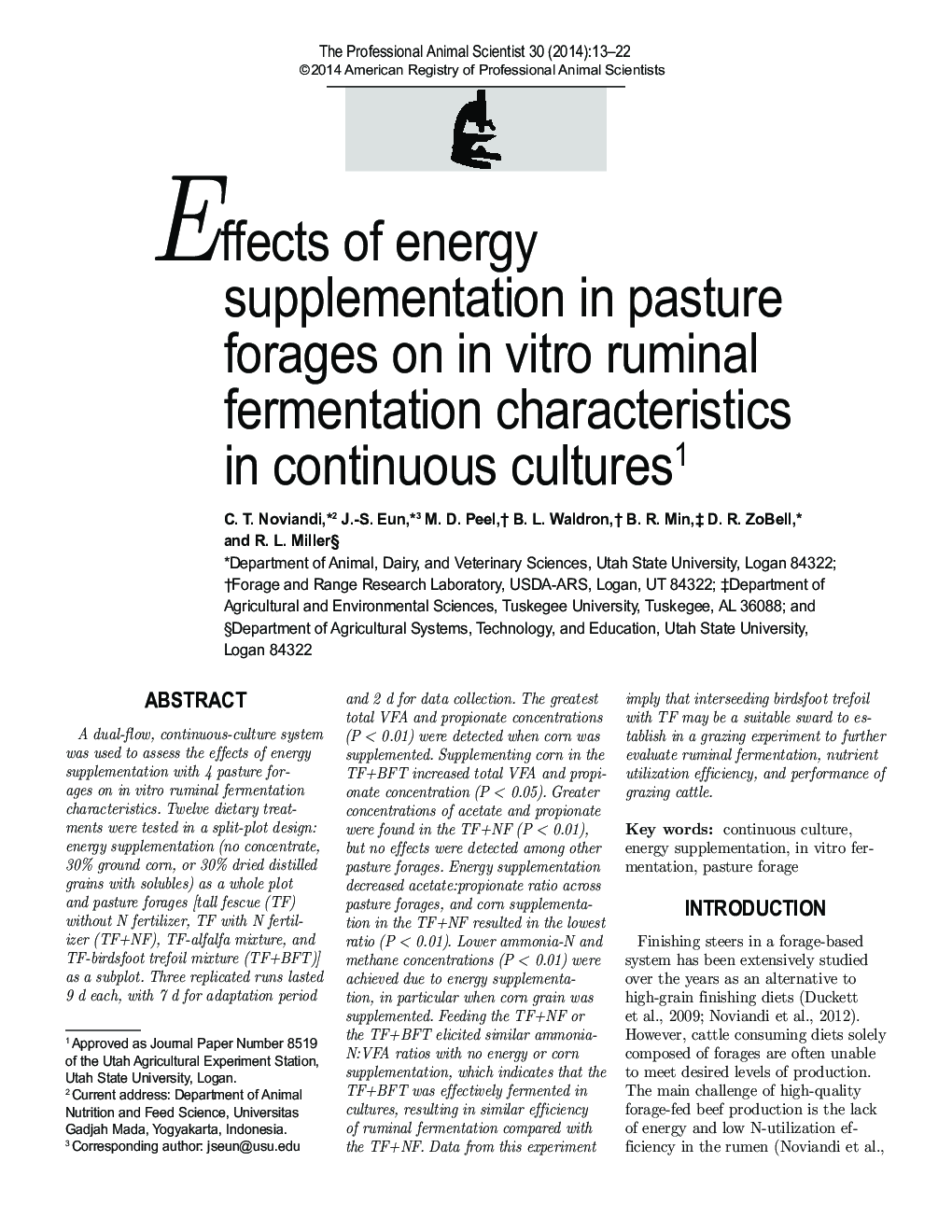| Article ID | Journal | Published Year | Pages | File Type |
|---|---|---|---|---|
| 2453945 | The Professional Animal Scientist | 2014 | 10 Pages |
Abstract
A dual-flow, continuous-culture system was used to assess the effects of energy supplementation with 4 pasture forages on in vitro ruminal fermentation characteristics. Twelve dietary treatments were tested in a split-plot design: energy supplementation (no concentrate, 30% ground corn, or 30% dried distilled grains with solubles) as a whole plot and pasture forages [tall fescue (TF) without N fertilizer, TF with N fertilizer (TF+NF), TF-alfalfa mixture, and TF-birdsfoot trefoil mixture (TF+BFT)] as a subplot. Three replicated runs lasted 9 d each, with 7 d for adaptation period and 2 d for data collection. The greatest total VFA and propionate concentrations (P < 0.01) were detected when corn was supplemented. Supplementing corn in the TF+BFT increased total VFA and propionate concentration (P < 0.05). Greater concentrations of acetate and propionate were found in the TF+NF (P < 0.01), but no effects were detected among other pasture forages. Energy supplementation decreased acetate:propionate ratio across pasture forages, and corn supplementation in the TF+NF resulted in the lowest ratio (P < 0.01). Lower ammonia-N and methane concentrations (P < 0.01) were achieved due to energy supplementation, in particular when corn grain was supplemented. Feeding the TF+NF or the TF+BFT elicited similar ammonia-N:VFA ratios with no energy or corn supplementation, which indicates that the TF+BFT was effectively fermented in cultures, resulting in similar efficiency of ruminal fermentation compared with the TF+NF. Data from this experiment imply that interseeding birdsfoot trefoil with TF may be a suitable sward to establish in a grazing experiment to further evaluate ruminal fermentation, nutrient utilization efficiency, and performance of grazing cattle.
Related Topics
Life Sciences
Agricultural and Biological Sciences
Animal Science and Zoology
Authors
C.T. Noviandi, J.-S. Eun, M.D. Peel, B.L. Waldron, B.R. Min, D.R. ZoBell, R.L. Miller,
